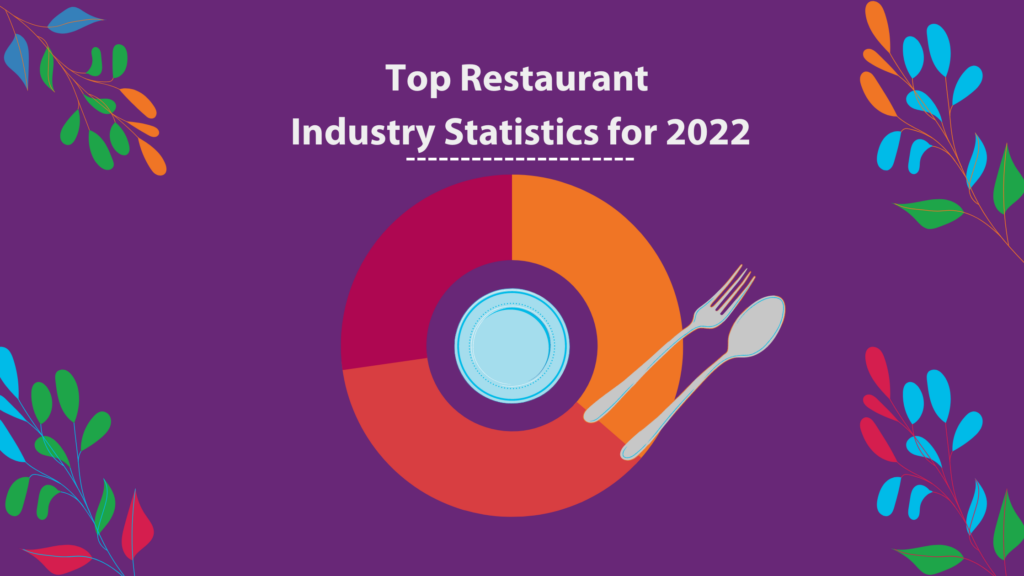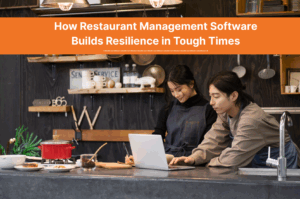You love working in the restaurant industry, right? To add to your enjoyment, let’s throw out some statistical mathematics for you to ruminate on just in case you get bored during the two or three minutes of spare time you have throughout the day.
We understand that statistics may be a pretty dry subject and you might ask yourself why you should concern yourself with them. Well, in addition to giving you an idea of how the whole industry is doing, restaurant statistics can offer you some insights into your own restaurant and its future.
There are a lot of restaurant industry statistics. They are sourced from many different providers from federal and state governments to trade groups, publications, and individual restaurants. In fact, we built our suite of software applications to generate useful statistics for your restaurant. Reading through all available statistics would be a laborious and time-consuming task.
For this blog entry, we decided to forgo listing the dozens of individual statistics (and there are several) and elected instead to select a few individual restaurant industry statistics and talk about why they would be of concern to you. In each section, we’ll list a few stats and then discuss some of their implications. The idea is to get you thinking about how these stats might relate to your business and help you make decisions for its future. We’d like to note that while global restaurant statistics are available, we’ll be focusing largely on the American market.
Let’s begin!
How Big of an Industry Is the Restaurant Industry?
Short answer: huge.
Long answer? Well, here are some restaurant revenue statistics to kick things off.
The number of people employed in the restaurant industry at the end of 2021: 14.5 million.
Industry sales from 2021: $799 billion.
To put some of that into perspective, if all restaurant workers in the U.S. lived in their own state, that state would be the fifth-largest state by population. That state would also have the fifth-largest gross state product in the union. To boot, both of these numbers are actually down quite a bit from the previous year thanks to the pandemic.
Our point? The restaurant industry is absolutely massive. If you’re reading this in 2022, it also means that there is considerable opportunity for growth in the industry both from organic growth and as the industry and whole economy recover from disruptions owing to the pandemic.
To be sure, thanks to ongoing economic uncertainty stemming from persistent inflation and talk of impending recessions, there are things to be concerned about but worries about the future and what may or may not come aren’t new. If you’re already in the restaurant industry, you have reasons to be optimistic. If you’re thinking about getting in (or back in) then, competitive as the industry is, there are opportunities. Some more stats.
Restaurants that employ 50 people or less: 90%
Restaurants that are single-unit operations: 70%
So what? So, it means that the restaurant industry is an industry where small businesses can compete successfully against large ones.
Sure, there are industry-leading behemoths like McDonald’s that between corporate and franchisee-owned restaurants operate tens of thousands of locations, employ over a million people, and make billions of dollars a year. That said, there are also very successful small restaurants, food trucks, food carts, and catering companies that can provide a good and fulfilling living for their proprietors.
Americans spend an average of ~9% of their income on food.
In 2020, Americans spent almost half of every dollar they spent on food in restaurants.
51% of adults would like to eat in a restaurant more often than they do.
What does this mean? It means that people like eating out, ordering in, and otherwise spending a substantial portion of their food money in restaurants and would like to do it more often.
This may or may not be the healthiest or most economical lifestyle, but it is what it is. This means that a smart, hardworking restaurateur with good data on hand and quick responsiveness to public tastes can theoretically claim a sizable chunk of an average American household’s income.
That is, of course, if they provide food and a dining experience that people like.
Restaurant Staffing: Perennial Challenge, Looming Crisis
U.S. national unemployment rate as of April 2022: 3.6%.
The current number of employees in the restaurant industry: is ~11.2 million.
Projected number of jobs in the industry by 2030: ~17.2 million.
Percentage of Americans 25 or older who hold a bachelor’s degree: 36%.
You’ll notice that this cluster of numbers contains both restaurant industry statistics and larger economy statistics. They are related and the implications are quite profound. First, unemployment in the United States is currently quite low.
That’s good, right? High unemployment means economic uncertainty and lots of tightened belts and constricted household budgets that leave little room for discretionary spending like dining out.
Yes, it is good and it’s certainly true that employed people who feel safe in their jobs do tend to spend more on luxuries like eating out or ordering in. But it also means that the pool of labor that the restaurant industry can tap is much smaller. This might not be a problem were it not for the fact that many restaurant workers have left the industry in droves with no intention of returning.
If these trends continue, it means that as the industry adds millions more jobs over the next decade, the labor market will only tighten. Staff will be harder to come by and will expect more money and/or perks to take jobs in the industry and stay on them. As you well know, many restaurants operate on razor-thin margins as it is and most restaurateurs simply cannot afford to pay much more, even if they’d like to.
The increase in bachelor’s degree holders adds another dimension to the problem. In the American popular consciousness, a bachelor’s degree is often seen as a ticket to a middle-class lifestyle: more money earned from jobs with better working conditions. Indeed, there has historically been a correlation between holding a bachelor’s degree and higher lifetime income.
For reasons that are beyond the scope of this entry, the efficacy of this model is becoming increasingly questionable as time goes on but that’s not the point. The point is, that people with bachelor’s degrees generally don’t want to work in the restaurant industry and as the number of people who possess these degrees continues to increase, the labor pool for the industry, already shallow thanks to low unemployment, will shrink further still.
Turnover in the restaurant industry in 2021: 86%.
The average cost of employee turnover (low complexity jobs): $5,693
The average cost of employee turnover (high complexity jobs): ~$9,932
As the statistical descriptions suggest, low complexity jobs are ones that require fewer skills and less training to do and can be mastered more quickly (e.g. host/hostess, wait staff) and high complexity jobs require more skills, more training and more time to master (e.g. management, line chefs). We hope these numbers will drive the point home. In addition to the market being tight and tightening, turnover is high, will likely remain high and it is expensive!
It may seem like we’re trying to sow discouragement.
Rest assured, we are not.
We are simply trying to impress on our readers that staffing challenges are considerable and are going to get more complicated and that will require the entire industry to adapt and change. The positive upshot is that if you are among the first to invent, innovate or adopt effective new labor practices, it will give you a considerable advantage over your competition.
Closing Thoughts on 2022 Restaurant Industry Statistics
We only hit on a few restaurant industry statistics. There are many, many more, each with their own suggestions and implications. If you’d like to take the time to peruse them we invite you to do so. We selected these few because we believe that they are of particular concern to the industry right now and that the way that the practicing or potential restaurateurs employ lessons derived from them will be a major factor in their success over the coming decade.
These are, of course, industry statistics. As important and helpful as they can be, you are going to want statistics that are relevant to your restaurant. That’s what our suite of software applications is for. We can help you collect and analyze your raw data and turn it into statistics that can help you to maximize profits, minimize waste, fully unleash the potential of your employees, and better understand your diners and their desires.
If you’d like a demo of how we can help, please get in touch!






